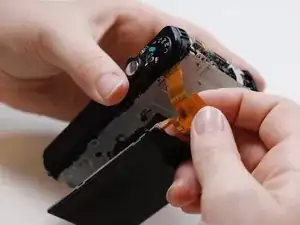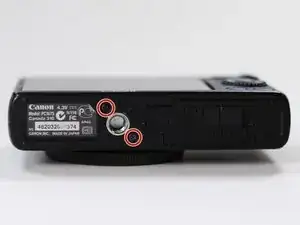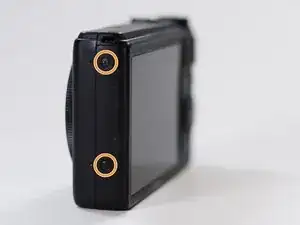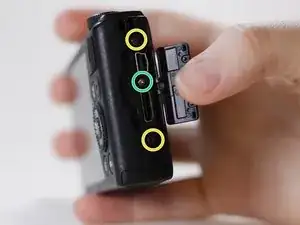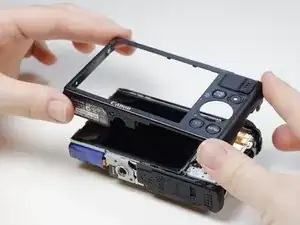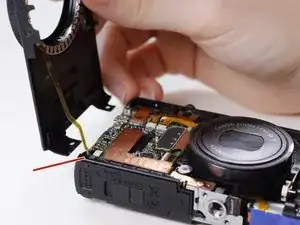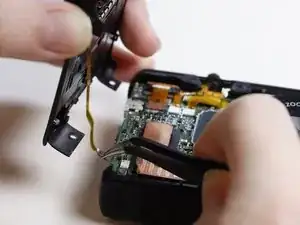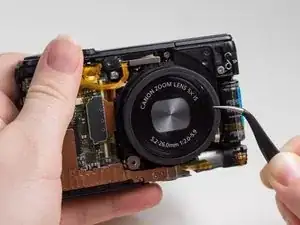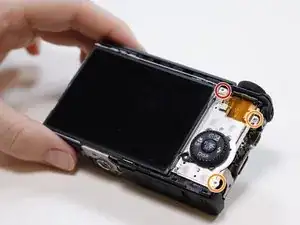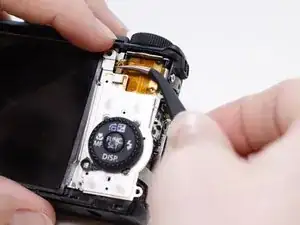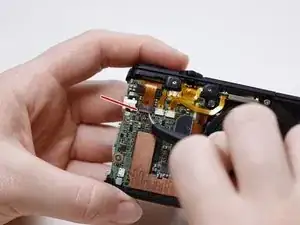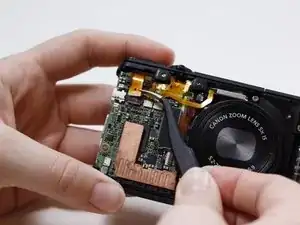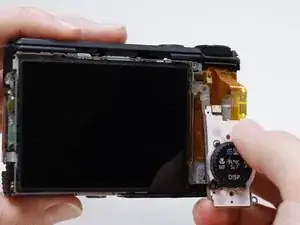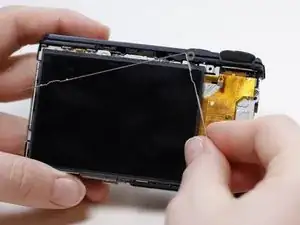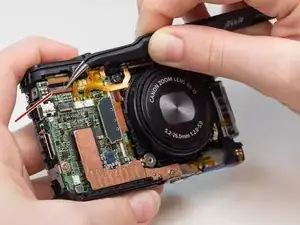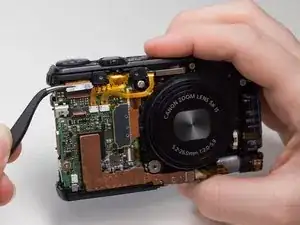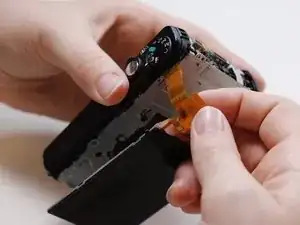Einleitung
The LCD screen can be removed and replaced. Photos, videos, and the camera menus are displayed on the LCD screen.
Werkzeuge
-
-
Remove the 2 screws (3.2mm, Phillips #00) found on the bottom side of the camera.
-
Remove the 2 screws (3.2mm, Phillips #00) found on the side of the camera.
-
Remove the 2 screws (3.2mm, Phillips #00) found on the side of the camera where the terminals are.
-
Open the flap revealing the cable inputs and remove the final screw (3.8mm, Phillips #00) found inside.
-
-
-
Turn the camera so that the LCD screen is facing you.
-
Remove the back panel by pulling it off of the camera.
-
-
-
Turn the camera so that the lens is facing you.
-
Slowly lift the front panel from the camera.
-
The ribbon cable is connecting the front panel to the camera. Using the tweezers, gently pull the ribbon cable out of its socket.
-
Remove the rubber guard that rests on top of the lens.
-
-
-
Turn the camera over so that the LCD screen is facing you.
-
Remove the screw (3.9mm, Phillips #00) that is attaching the thin metal frame to the camera.
-
Remove the 2 screws (3.1mm, Phillips #00) that are attaching the control dial panel to the camera.
-
-
-
Turn the camera over so that the lens is facing you.
-
Using the tweezers, gently lift the flap that is securing the ribbon cable to the motherboard.
-
Using the tweezers, remove the ribbon cable from its socket.
-
-
-
Turn the camera over so that the LCD screen is facing you.
-
Gently pull the control dial panel, and its attached ribbon cable, through the opening between the top panel and the camera body.
-
-
-
Turn the camera over so that the lens is facing you.
-
Using the tweezers, gently lift the flap that secures the ribbon cable to the motherboard.
-
Using the tweezers, detach the ribbon cable.
-
-
-
Turn the camera over so that the LCD screen is facing you.
-
Gently pull the LCD screen, and its attached ribbon cable, through the opening between the top panel and the camera body.
-
To reassemble your device, follow these instructions in reverse order.
9 Kommentare
Thank you for this guide. I managed to strip one of the screws holding down the control dial and had to drill it out -- don't send a software engineer to do a hardware job :-) . I also found re-inserting the cables into the sockets pretty painful.
Overall it was a pretty easy fix. Your guide and $9 on eBay (http://r.ebay.com/jbyswX) saved me a $150 repair from Canon.
Thanks again.
No wonder step 6 - the part that says 'gently lift the flap' is written in red. The 'flap' is glued onto the camera, and 'lifting' it simply breaks it off the camera, never to be returned. It was all going so well until this point; now I have to take/send it to an engineer and hope it can be fixed. I would ignore this part!
Thank you for this excellent guide. I had a pressure popped LCD screen rendering the camera useless! However, your guide and £14.99 for an Amazon spare part, plus about 20 minutes following your guide and I have a fully working camera. Those ribbon cable are tricky though!
HowieB -
